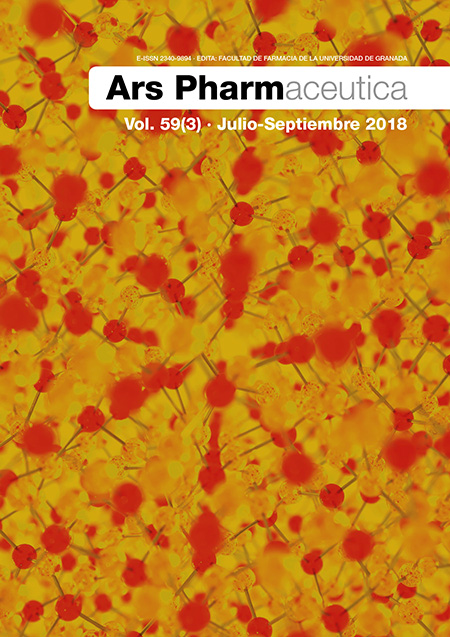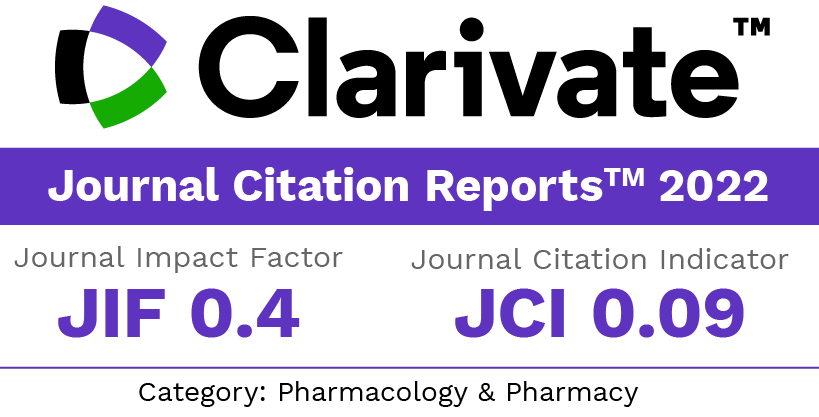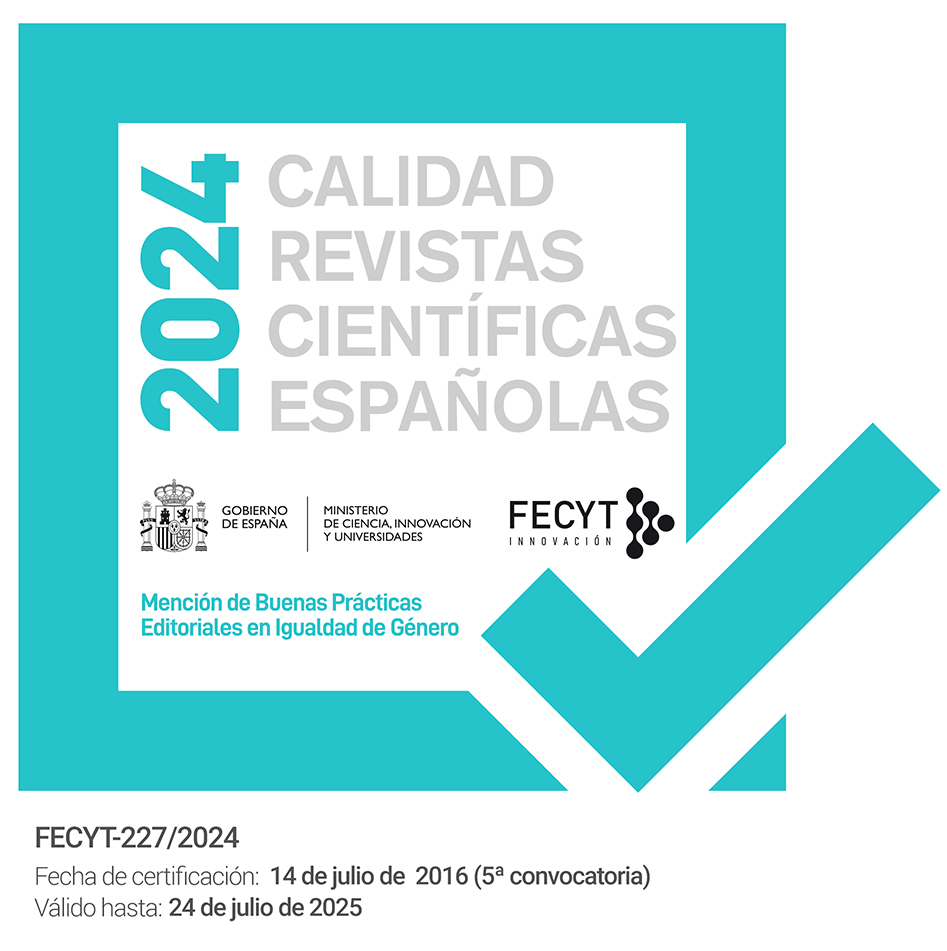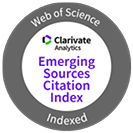Effective potential studies for some new hybrid molecules for their activity against prostate cancer
Keywords:
Hybrid, DU145, 22Rv1, SPR, Molecular dockingAbstract
Objective: The present work aimed at developing novel hybrid molecules for targeting the prostate cancer. It is observed that two human shock proteins Hsp70 and Hsp90 are over-expressed in prostate cancer making them one of the important drug targets. We have designed and developed twelve new hybrid molecules 6a-j for targeting these proteins.
Methods: The designed molecules were prepared following a four step reaction protocol and characterized on the basis of proton NMR and Mass spectrometry. These were subjected to in vitro studies by means of Oncotest and CCK-8 assays with two cell lines DU145 and 22Rv1. The selected molecules 6b and 6i were subjected to molecular docking and then for SPR based affinity assay.
Results: Compounds 6b and 6i were found to be highly active anticancer compounds comparable to standard drug enzalutamide. They have significant IC50 and high dock score for the Hsp70 and Hsp90. These compounds are selective and have good binding affinity for the Hsp70 due to high Kd.
Conclusion: Compound 6b and 6i can serve as lead molecules for the development of antiprostate cancer drugs with Hsp70 as target.
Downloads
References
Goloudina AR, Demidov ON, Garrido C. Inhibition of HSP70: a challenging anti-cancer strategy. Cancer Lett. 2012;325(2):117-24. DOI: 10.1016/j.canlet.2012.06.003.
Dayalan-Naidu S, Sutherland C, Zhang Y, Risco A, de-la-Vega L, Caunt CJ, Hastie CJ, Lamont DJ, Torrente L, Chowdhry S, et al. Heat Shock Factor 1 is a Substrate p38 Mitogen-Activated Protein Kinases. Mol Cell Biol. 2016:16-24. DOI: 10.1128/MCB.00292-16.
Verma S, Goyal S, Jamal S, Singh A, Grover A, H. sp90: Friends, clients and natural foes, Biochimie. 2016;127:227-40. DOI: 10.1016/j.biochi.2016.05.018.
Aktug H, Acikgoz E, Uysal A, Oltulu F, Oktem G, Yigitturk G. Comparison of cell cycle components, apoptosis and cytoskeleton-related molecules and therapeutic effects of flavopiridol and geldanamycin on the mouse fibroblast, lung cancer and embryonic stem cells. Tumour Biol. 2016; 1-11. DOI: 10.1007/s13277-016-5108-9
Chaudhary AK, Bhat TA, Kumar S, Kumar A, Kumar R. Mitochondrial dysfunction-mediated apoptosis resistance associates with defective heat shock protein response in African-American men with prostate cancer. Br J Cancer. 2016;114(10):1090-100. DOI: 10.1038/bjc.2016.88
Jeon YG, Jung S, Yun J. Ginkgetin inhibits the growth of DU-145 prostate cancer cells through inhibition of signal transducer and activator of transcription 3 activity. Cancer Sci 2015;106(4): 413–420. DOI: 10.1111/cas.12608
Chen H, Xu F, Liang X, Xu B, Yang Z, He X, Huang B, Yuan M. Design, synthesis and biological evaluation of novel arylpiperazine derivatives on human prostate cancer cell lines. Bioorganic & Medicinal Chemistry Letters. 2015;25:285–287. DOI: 10.1016/j.bmcl.2014.11.049
Heidegger I, Massoner P, Eder I. Novel therapeutic approaches for the treatment of castration-resistant prostate cancer. J Steroid Biochem. Mol Biol. 2013;138:248–256. DOI: 10.1016/j.jsbmb.2013.06.002
Colloca G. Prostate-specific antigen kinetics as a surrogate endpoint in clinical trials of metastatic castration-resistant prostate cancer: A review. Cancer treatment reviews. 2012;38(8):2020-2042. DOI: 10.1016/j.ctrv.2012.03.008
Krishnamoorthy GP, Guida T, Alfano L, Avilla E, Santoro M, Carlomagno F, Melillo RM. Molecular mechanism of 17-allylamino-17-demethoxygeldanamycin (17-AAG)-induced AXL receptor tyrosine kinase degradation. J Biol Chem. 2013;288(24):17481-94. DOI: 10.1074/jbc.M112.439422
Chikhale RV, Pant AM, Menghani SS, Wadibhasme PG, Khedekar PB. Poly (Ethylene Glycol)-Bound Sulphonic Acid as a Novel Catalyst for Synthesis of Benzoxazoles. S. Afr. J. Chem. 2013;66:254–262.
Bhole RP, Bhusari KP. Synthesis and antitumor activity of (4-hydroxyphenyl) [5-substituted alkyl/aryl)-2-thioxo-1,3,4-thiadiazol-3-yl]methanone and [(3,4-disubstituted)-1,3-thiazol-2ylidene]-4-hydroxybenzohydrazide, Med. Chem Research. 2011:20(6),695-704. DOI 10.1007/s00044-010-9371-9
Di Matteo M, Ammazzalorso A, Andreoli F, Caffa I, Synthesis and biological characterization of 3-(imidazol-1-ylmethyl)piperidine sulfonamides as aromatase inhibitors. Bioorg Med Chem Lett. 2016;26(13):3192-4. DOI: 10.1016/j.bmcl.2016.04.078
Chikhale R, Thorat S, Pant A. Design, synthesis and pharmacological evaluation of pyrimidobenzothiazole-3-carboxylate derivatives as selective L-type calcium channel blockers. Bioorganic & Medicinal Chemistry. 2015;23:6689–6713. DOI: 10.1016/j.bmc.2015.09.009
Nique F, Hebbe S, Peixoto C. Discovery of diarylhydantoins as new selective androgen receptor modulators. J. Med. Chem. 2012;55:8225-8235. DOI: 10.1021/jm300249m
Dengler W, Schulte J, Berger D, Mertelsmann R, Fiebig H. Anti-Cancer Drugs. 1995;6:522-26.
Goswami R, Mukherjee S, Ghadiyaram S. Structure-guided discovery of 1,3,5 tri-substituted benzenes as potent and selective matriptase inhibitors exhibiting in vivo antitumor efficacy. Bioorganic & Medicinal Chemistry. 2014;22:3187–3203. DOI: 10.1016/j.bmc.2014.04.013
Wang Y, Zhang S, Zhang C, Zhao Z. Investigation of an SPR biosensor for determining the influence of connexin 43 expression on the cytotoxicity of cisplatin. Analyst. 2016;141(11):3411-20.
Published
How to Cite
Issue
Section
License
Copyright (c) 2018 Ritesh P Bhole, Yogesh B Zambare, Chandrakant G Bonde

This work is licensed under a Creative Commons Attribution-NonCommercial-ShareAlike 4.0 International License.
The articles, which are published in this journal, are subject to the following terms in relation to the rights of patrimonial or exploitation:
- The authors will keep their copyright and guarantee to the journal the right of first publication of their work, which will be distributed with a Creative Commons BY-NC-SA 4.0 license that allows third parties to reuse the work whenever its author, quote the original source and do not make commercial use of it.
b. The authors may adopt other non-exclusive licensing agreements for the distribution of the published version of the work (e.g., deposit it in an institutional telematic file or publish it in a monographic volume) provided that the original source of its publication is indicated.
c. Authors are allowed and advised to disseminate their work through the Internet (e.g. in institutional repositories or on their website) before and during the submission process, which can produce interesting exchanges and increase citations of the published work. (See The effect of open access).



















